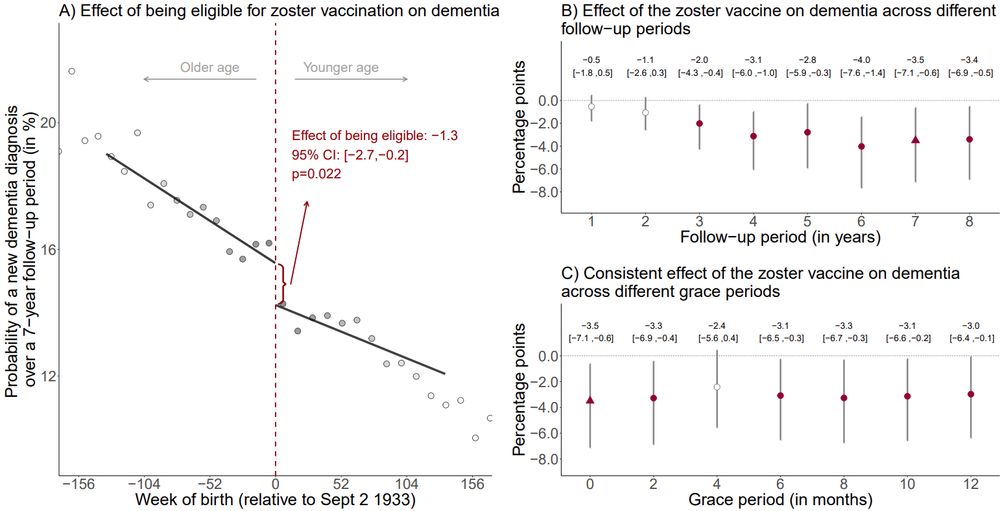meyting.com
Future studies should investigate why!

Future studies should investigate why!
Increase in vaccination uptake at the cutoff:
- 0.01% vaccination for those just too old
- 47.2% vaccination for those just young enough
Receiving the vaccine reduced dementia risk by 3.5 percentage points (95% CI: 0.6 – 7.1, p=0.019), i.e. ~20%, over 7 years.

Increase in vaccination uptake at the cutoff:
- 0.01% vaccination for those just too old
- 47.2% vaccination for those just young enough
Receiving the vaccine reduced dementia risk by 3.5 percentage points (95% CI: 0.6 – 7.1, p=0.019), i.e. ~20%, over 7 years.
This was a perfect setting for combining medical data and econometric methods! Policy evaluation of large public health intervention is rarely possible, but here was a unique chance to learn something causal about a vaccine policy at a large scale.
This was a perfect setting for combining medical data and econometric methods! Policy evaluation of large public health intervention is rarely possible, but here was a unique chance to learn something causal about a vaccine policy at a large scale.
We used a natural experiment in Wales where shingles vaccine (Zostavax) eligibility was based on an birthdate cutoff, separating eligible and ineligible cohorts. This gave us a great RDD setting to causally estimate its effect on dementia risk.
We used a natural experiment in Wales where shingles vaccine (Zostavax) eligibility was based on an birthdate cutoff, separating eligible and ineligible cohorts. This gave us a great RDD setting to causally estimate its effect on dementia risk.

